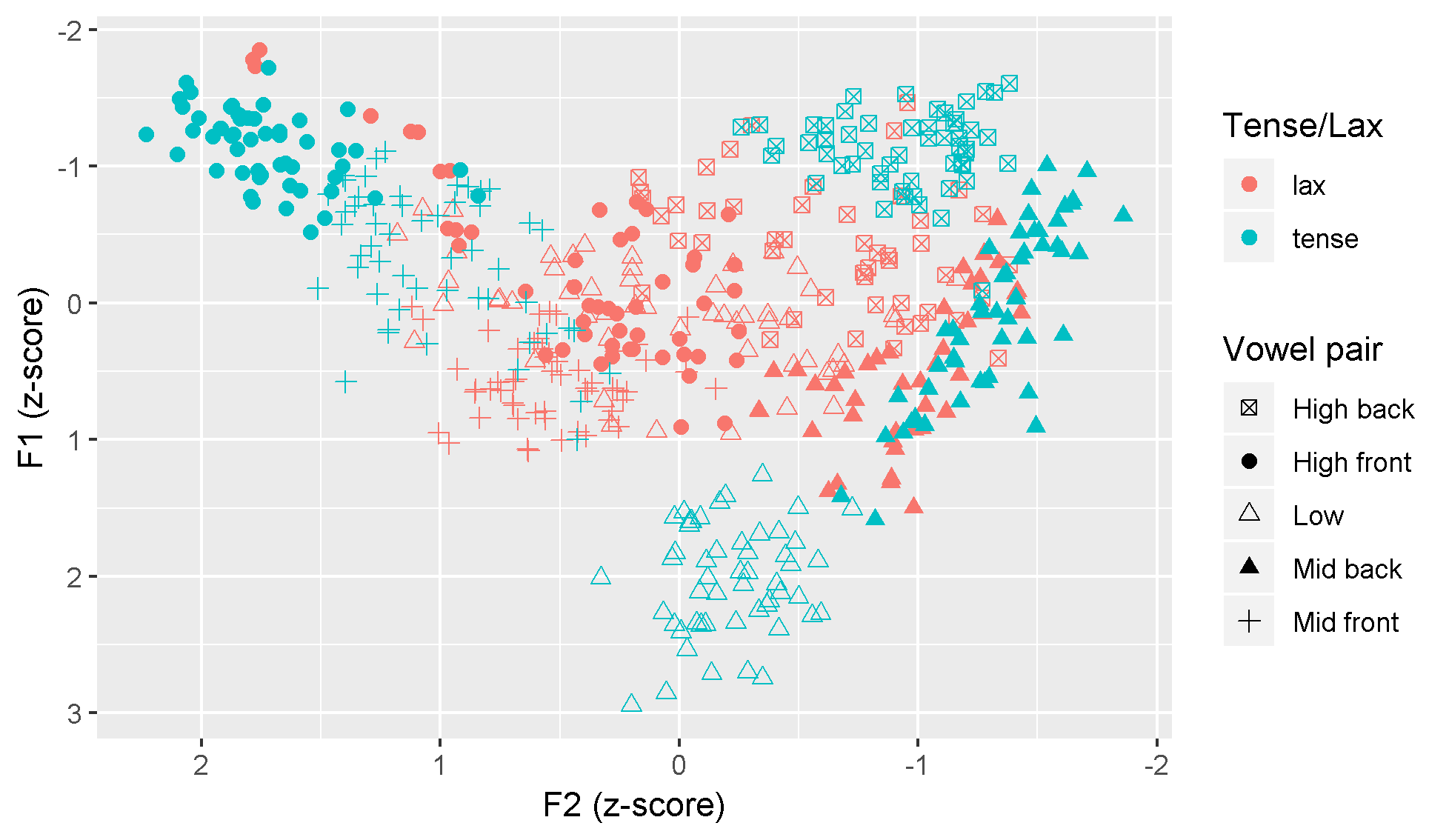Research in phonetics, phonology and prosody

My doctoral research focused on the phonetics and phonology of Chichicastenango K'iche', with a particular focus on prosody. Specific topics addressed include vowel quality, stress, vowel deletion, voice quality and intonation. I have also participated in collaborative projects on the perception of laryngealization in English and Spanish and on the production of glottal fricatives in Yucatec Maya.
Tense and lax vowels in Chichicastenango K'iche'
In the Chichicastenango dialect of K'iche' there is a contrast between two groups of vowels, commonly referred to as "tense" and "lax", which resulted from a historic contrast in vowel length. Through a vowel production experiment I showed that the lax vowels are each articulated in a more centralized position as compared to their tense pair, and there are no consistent duration differences between them. Additionally, the lax high front vowel shows signs of having merged with the tense high front vowel /i/ and the lax central vowel /ə/. This is similar to the phonetics of tense and lax vowels in the related language Kaqchikel, but quite different from what is meant by these terms in many other languages. These results contribute to knowledge of phonetic dialectal variation in K'iche' as well as how vowel systems change over time.

Glottalization in Chichicastenango K'iche'
It is commonly stated that all otherwise vowel-initial words begin with a glottal stop in Mayan languages. Through a study of full closures and acoustic measures of voice quality in a corpus of spontaneous speech I show that in Chichicastenango K'iche' not all vowel-initial words have an initial glottal stop. Rather, there is greater glottalization at the beginning of initial vowels that are stressed or are preceded by a pause or a word ending in a vowel or glottalized consonant. This is consistent with the existence of a word-initial glottal stop segment in these positions that is frequently reduced in naturalistic speech. Vowels that occur in the initial position of the intonational phrase, in contrast, have greater glottalization throughout: this is not because of coarticulation with a glottal stop, but instead a prosodic marker that helps locate the edges of phrases. In addition to revealing the specific pattern of glottal stops and glottalization in Chichicastenango K'iche', this project also shows the importance of quantitative and acoustic data to distinguish between different linguistic processes with similar perceptual results.

Phrase-final morphemes and intonational phrasing in Chichicastenango K'iche'
Many different morphemes in K'iche' have 'phrase-final' and 'phrase-medial' forms; that is, the form of the morpheme depends on its position in the phrase. It is debated in the literature whether phrase-final forms occurs at the end of a syntactic constituent (the clause) or a prosodic constituent (the intonational phrase). Based on data from a corpus of spontaneous narratives I show that the phrase-final forms of a set of verbal suffixes called status suffixes do not correlate perfectly with either clause boundaries nor IP-final boundary tones. I argue that the distrubution is nevertheless prosodic and occurs in IP-final position but does not match the positions of boundary tones because these are restricted to the ends of the highest IP in a recursive structure. This project shows the value of naturalistic data in describing complex patterns, and provides a specific example of when native speaker intuitions and grammaticality judgments may differ from what occurs in actual usage of the language.
Perception of laryngealization in English and Spanish
In a collaborative project with Dr. Megan Crowhurst and Mackenzie Walters, we investigated the use of laryngealized voicing and duration as perceptual cues to phrase boundaries in ambiguous contexts with monolingual and bilingual speakers of English and Spanish. Results of the experiment showed that each of the groups of listeners were more likely to judge the existence of a phonological phrase boundary after a word when it was longer or produced with creaky voice. We also found differences between the behavior of bilingual listeners and monolingual listeners of the same language. To date, most research on the perception and production of laryngealization as a prosodic marker has been on English; this project shows that a similar pattern is found in Spanish as well.